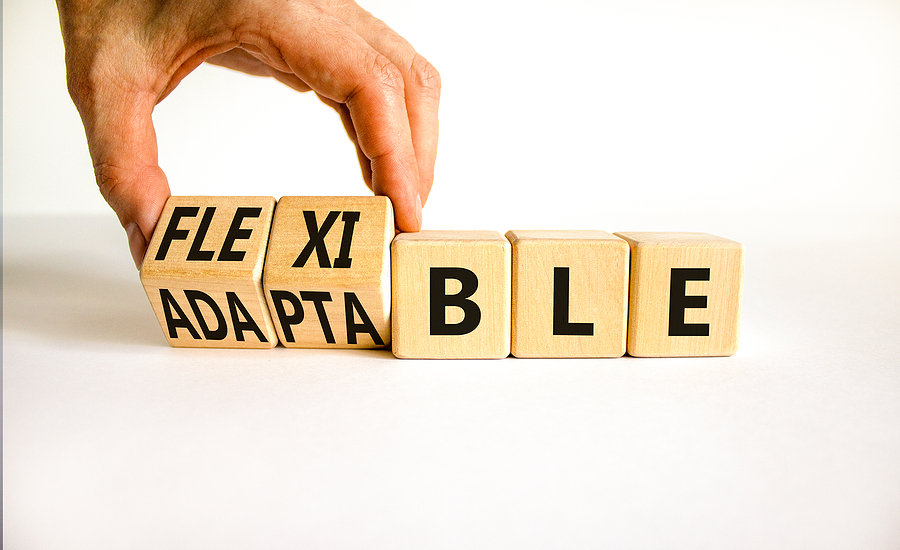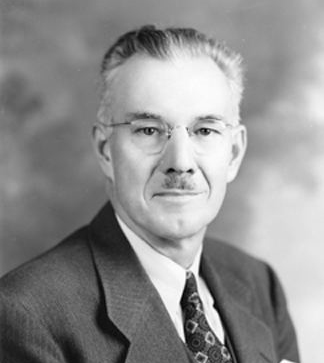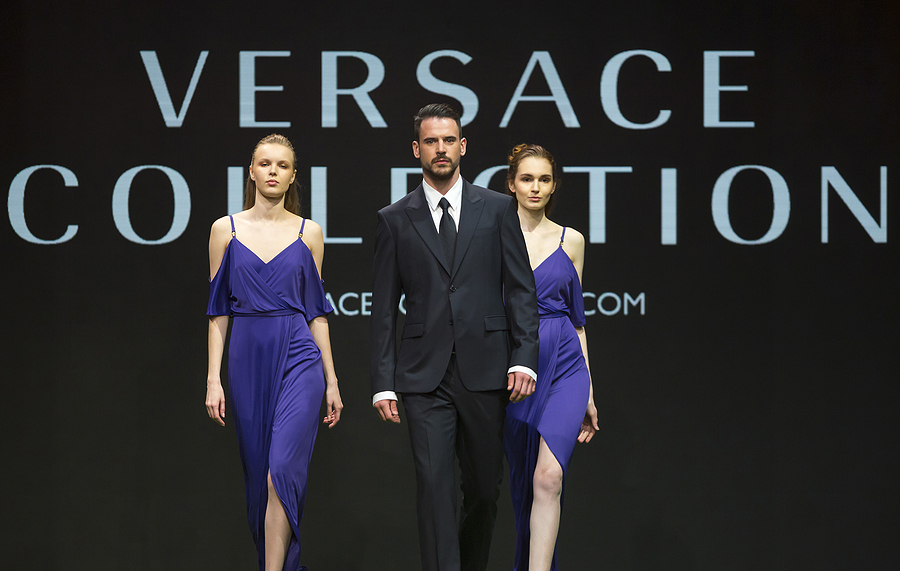
What Is Psychological Flexibility?
Psychological flexibility – heard of it? Don’t worry if you haven’t. Many qualified psychologists would struggle if you asked them what psychological flexibility is. And maybe just as important, what it is not.
Let’s start by looking at the origins of the word flexible from which flexibility derives. The Online Etymology Dictionary Etymonline says:
Flexible (adjective):
early 15c., “capable of being bent; mentally or spiritually pliant,” from Old French flexible or directly from Latin flexibilis “that may be bent, pliant, flexible, yielding;” figuratively “tractable, inconstant,” from flex-, past participle stem of flectere “to bend,”
The two words that jump out from this are yielding and bend. We’ll come back to these.
Of course, the word flexibility is much more commonly associated with physical flexibility from a human point of view. So much so that if you booked in to see an exercise physiologist and asked him or her to help you design a program to boost flexibility, they’re unlikely to ask whether you mean mental or physical.
Flexibility in terms of the human body means that there is a far greater range of possible movements. This is, of course, most beneficial in an injury prevention scenario. Two similar athletes who endure the same brutal rugby league tackle are most likely impacted not by how strong they are but by how flexible they are.
It goes without saying that there are sports in which physical flexibility is arguably the number one priority. Gymnastics and many dancing pursuits emphasise the importance of suppleness. It is the same for psychological flexibility. It’s beneficial for all performance areas but absolutely critical for a few.
Outcomes vs Processes
It’s impossible to overemphasise the usefulness of separating processes from outcomes. Why? To realise how much more influence you have on processes.
So, what do physical and psychological flexibility have in common? Both types of flexibility are outcomes. They are the possible consequences of the things we do. If these processes are sound (sufficiently scientific), then the consequence may result in some improvement.
There is nothing wrong with aiming for outcomes as long as you know they are outcomes. They often make for an invaluable starting point. For example, it’s far more helpful to want to improve your physical flexibility than your overall physical health. In the same way, it is better to want to improve your psychological flexibility than your “mindset.”
Psychological Rigidity
Sometimes, when trying to understand a concept, it can be helpful to know the opposite. For example, when learning about good manners, it can be helpful to know what poor manners look like.
The opposite of psychological flexibility is psychological rigidity. It is interesting how obvious it is that physical rigidity is not desirable. But in some circles, psychological rigidity can be regarded as beneficial. For example, certain aspects of the military might believe this.
I am about a four on a scale of one to ten between rigidity and flexibility, where zero represents maximum rigidity. But I used to be a one, maybe even a zero. Certain traits of psychological rigidity are extreme rule-following and stubbornness. “It’s my way or the highway”. This is fine if you live by yourself on a desert island, but in the real world, it causes issues. Over time, I have moved from a one to a four through the core practices below. Thank you to my colleague Lauren Bischoff on the research put into the below, which she wrote.
1. Cognitive Defusion
Have you ever been distracted by unhelpful thoughts while training or competing? It is more common than you’d imagine and can make focusing on your processes ten times harder. Thoughts such as “I’m not good enough” or “I am too anxious to perform at my best” tend to be automatic thoughts. The issue is we have very little influence on these thoughts.
The good news is that we can learn to make room or unhook from these thoughts with a bit of practice. This process frees up mental space to focus on what is essential: our actions. This concept of ‘making room’ is really important. Basically, the human mind only has the ability to deal with so much at any given time. This process leaves little room for anything else when we argue with our own thoughts. But when we accept and notice them, we can use the rest of the room to focus on skill execution. To get on with the job at hand, so to speak.
Although this might sound easy in theory, it takes practice. Let’s take a basketball player who is fixated on the consequences of missing the next shot. In this situation, they can get unstuck from these thoughts by acknowledging that “I’m having the thought that I might miss the next shot”. Did you notice any difference in the meaning between these two statements? The second thought allows us not to be as controlled by the thought of missing the shot. She makes the next attempt despite the thought.
Next time you get caught up in your thoughts, try noticing that your thoughts are just thoughts.
2. Acceptance
Acceptance plays a big part in learning to open up to and learn from our experiences. This involves acknowledging our thoughts and emotions and letting go of what is getting in the way. We can acknowledge our thoughts and learn to accept them for what they are: just thoughts.
It is natural to want to fight our thoughts or feelings, but this makes us focus on them more. I use the purple elephant example when explaining acceptance.
I want you to stop thinking about a purple elephant!
The harder we try to stop having a thought, the more likely we will experience or focus on it. Therefore, let’s accept that we are having this thought in the first place without fighting it.
Often, we focus on avoiding a feeling or experience that makes us uncomfortable, such as anxiety or pressure. However, you might be surprised that anxiety and pressure are a normal part of the human experience. And especially when those humans are trying to achieve something hard yet meaningful.
I will not detail the fight and flight response here, as other Mental Toughness Digest articles have covered this concept well.
When we accept our life experiences, we can learn from them and move to the decision-making part faster. If you got an opportunity to compete for your country at the Olympics (for example), and the experience came with lots of pressure, would you still want to go? I know that I would still want to take up that opportunity, but at the same time, I accept that pressure and anxiety will likely show up.
3. Committed Action
Committed action involves taking responsibility for our actions and moving towards who we want to be and what we want to do. This is almost always challenging. Our uncomfortable thoughts and feelings often pull us away from what we truly want to achieve.
Committed action refers to sticking to our processes, regardless of our thoughts or feelings. Remember that we have a lot of influence on our actions, much less on our thoughts and even less on our feelings.
Let’s take a gymnast by way of an example. Committed action on the beam would involve completing each skill despite fearing falling. Or a soccer goalkeeper during a penalty shootout. Usually, anyone would be nervous in that situation. However, it is more effective for the goalkeeper to go about their job rather than trying to calm themselves down.
A key aspect of committing to our actions is building competence in the actual skills before we start feeling confident. Imagine trying to build a new habit. It would be nice to see change overnight, but it takes practice. As we know, practice makes permanent. Competencies are well-rehearsed actions that can be relied upon. Confidence is a feeling and is inherently very unreliable.
4. Values
Think about an athlete that you look up to. What values or qualities do you admire about that person? Maybe they are a good team player or have excellent body language under pressure.
As athletes start competing at a higher or more competitive level, they can forget about why they fell in love with the sport in the first place. I highly encourage you to reflect on why you play your sport. No, not just one now, but every month.
It’s important to highlight that our values and goals are different. Goals help us to stay on course with our values. For example, if our goal is to be the best hockey player, we might value stamina and being a good team player. This brilliant video below by Dr Russ Harris explains more on this:
5. Staying In The Moment
It is natural to get distracted by the world around us, which pulls us away from what we are doing. Our mind is designed to keep us safe, and it does this, in part, by predicting the future. Millions of years ago, this was quite adaptive as there were many more sabertooth tigers around and fewer professional golf tournaments 😛!
The workaround is through regular mindfulness and paying attention to the present moment with less judgment. There are many ways to do this. One way is for you to try to notice internal and external stimuli. What can you hear right now if you pause and focus solely on the sounds around you?
If you need a helping hand, the below 12-minute Really Simple Mindfulness guide created by Condor Performance’s first-ever sport psychologist, Gareth J. Mole, is a great tool. Unlike the many guided meditation and mindfulness apps available, the below are free.
6. Self As Context
Lastly, self as context allows us to observe our experiences without getting caught up in them as much. We often refer to this as our “observing self”, meaning we become better at seeing the world in a way that’s less about us.
Being human with higher cognitive abilities than most animals is a very unusual experience. We live on a planet with approximately eight billion people, but we are only aware of the thoughts and feelings of one of these people.
For this reason, it’s essential to see ourselves as separate from our thoughts or emotions and remember that we are not our thoughts. Another video by Dr Harris below uses ‘stageshows’ to explain this in more depth:
Conculsion
The term ‘psychological flexibility’ is used only slightly compared to terms such as mental toughness. However, psychological flexibility and the above six core practices are at the heart of improving mental toughness. It’s worth concluding that working on one of these in isolation from the others can be helpful; the actual “lift-off” occurs when all six practices are prioritised simultaneously. It works in a very similar way to physical flexibility. Stretching at home and regular yoga can be done in isolation, but I guess it’s better if you do both.
Quite understandably, many people would benefit from having a guide or a coach when trying to get started on the strategies covered in this article. If this is you, please don’t hesitate to contact us and ask about our one-on-one psychology services. We constantly endeavour to reply to all genuine enquiries within two or three working days.





